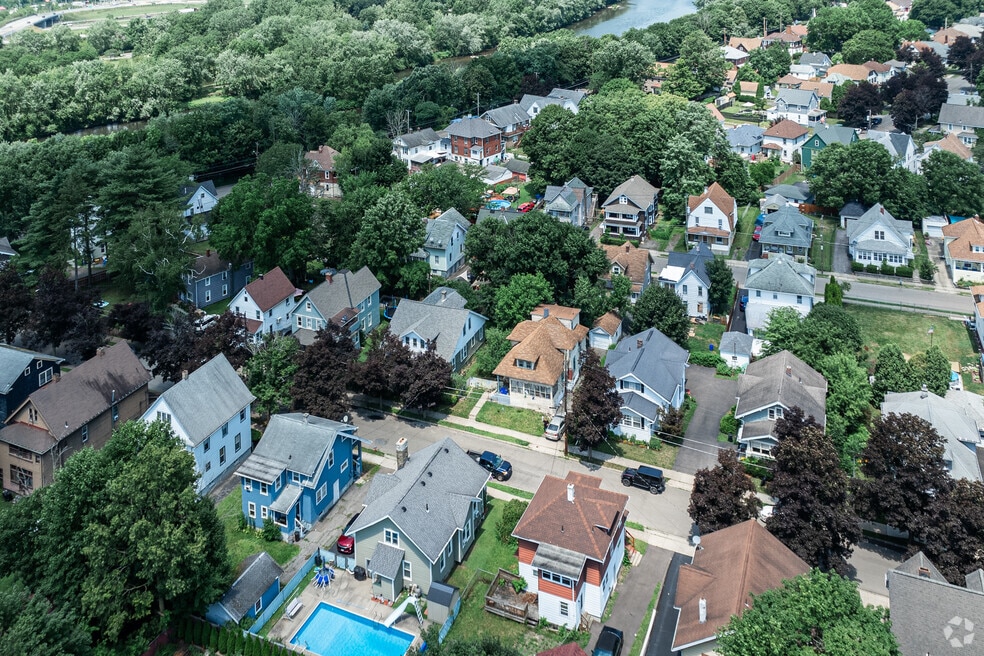Step-by-Step Guide to Applying for Binghamton Repair Grants homeownership is a cherished milestone, but maintaining a house—especially an older one—can quickly become overwhelming. In Binghamton, many residents face the daunting challenge of repairing homes that show signs of wear, damage, or outdated systems. Luckily, Binghamton repair grants exist to help ease this burden. These grants provide vital financial assistance for essential repairs, helping homeowners preserve their properties and boost community stability.
If you’ve been wondering how to apply for Binghamton repair grants, this detailed guide will walk you through every stage of the process. From understanding eligibility criteria to gathering necessary documents, submitting a winning application, and navigating inspections—this comprehensive resource has you covered. Let’s dive in and unlock the pathway to a safer, more comfortable home in Binghamton.

Understanding Binghamton Repair Grants: What You Need to Know First
Before embarking on your application journey, it’s crucial to grasp the nature and purpose of Binghamton repair grants. These funds are specifically designed to help homeowners fix critical issues such as roofing, plumbing, electrical hazards, heating system malfunctions, and other structural concerns. The primary goal? To ensure that homes are safe, habitable, and energy-efficient.
The city, in collaboration with state and federal agencies, offers several grant programs. These are typically targeted at low-to-moderate income households to promote equitable access to quality housing. The grants often do not require repayment, provided homeowners meet the program’s terms and conditions, including maintaining residence for a specified time.
Step 1: Confirm Your Eligibility
Your first task in how to apply for Binghamton repair grants is to determine if you qualify. Eligibility requirements vary slightly by program, but common factors include:
- Homeownership: You must own and occupy the home as your primary residence.
- Income Limits: Most grants target low-to-moderate income households. Income thresholds depend on family size and program specifics.
- Property Location: The property must be within the city limits of Binghamton.
- Repair Needs: The home should require repairs related to health, safety, or code compliance.
- Residency Commitment: Some programs require homeowners to commit to living in the home for several years after receiving the grant.
How to Verify Eligibility
Check official city websites or contact the Binghamton Department of Planning and Community Development to get precise income limits and program details. Many agencies offer pre-screening services that can save time.
Step 2: Identify the Appropriate Grant Program
Binghamton has multiple repair grant programs, each catering to different needs and homeowner profiles. Knowing which program fits your situation is critical for a successful application.
Examples of Common Binghamton Repair Grants
- Homeowner Rehabilitation Grant: Covers critical structural repairs, often up to $50,000.
- Weatherization Assistance Program: Focuses on energy efficiency upgrades.
- Community Development Block Grant (CDBG): Allows for a variety of home repairs in eligible neighborhoods.
- Historic Preservation Grants: For homes in designated historic districts, supporting preservation and repair.
Research and select the program(s) that best align with your repair needs and eligibility.
Step 3: Gather Necessary Documentation
A meticulous application requires thorough documentation. Preparing these materials ahead of time can streamline your application process when learning how to apply for Binghamton repair grants.
Essential Documents Typically Include:
- Proof of homeownership (e.g., deed, mortgage statement)
- Valid government-issued photo ID
- Recent proof of income (tax returns, pay stubs, Social Security benefits)
- Property tax statements
- Utility bills
- Written estimates from licensed contractors for needed repairs
- Proof of residence within Binghamton city limits
Organize these files digitally or in a dedicated folder to ensure quick access during application submission.
Step 4: Attend Informational Workshops or Consult with Housing Counselors
Many Binghamton housing agencies conduct workshops or provide counseling to help residents navigate the complexities of how to apply for Binghamton repair grants. Participating in these sessions can provide valuable insights, clarify doubts, and increase your chances of success.
- Workshops explain program details, application procedures, and document requirements.
- Counselors can assist with form completion, eligibility clarification, and troubleshooting.
Seek these resources through the City of Binghamton or local nonprofit organizations focused on housing assistance.
Step 5: Complete the Application Form Accurately
The application form is your formal introduction to the grant administrators. Precision and honesty here are paramount.
Tips for Filling Out Your Application:
- Double-check each field for accuracy.
- Provide detailed descriptions of repair needs.
- Attach all required documents.
- Review the form for completeness before submitting.
- Use clear, concise language to explain your circumstances and urgency.
Errors or omissions can delay the process or lead to outright denial.
Step 6: Submit Your Application on Time
Deadlines can be strict. Many Binghamton repair grants operate on a first-come, first-served basis or have limited funding windows.
- Submit your application through the correct channel: online portals, in-person drop-off, or mail.
- Keep a copy of your submission confirmation or receipt.
- Follow up if you do not receive acknowledgment within a reasonable timeframe.
Being proactive ensures your application won’t be dismissed due to technicalities.
Step 7: Prepare for Property Inspections
After your application passes initial review, expect an inspection by a certified professional.
What Inspectors Look For:
- Structural damage
- Electrical and plumbing issues
- Heating and cooling system conditions
- Safety hazards such as mold, lead paint, or carbon monoxide risks
- Energy efficiency opportunities
Make your home accessible, clear clutter, and ensure the inspector can safely assess all necessary areas.
Step 8: Review and Respond to Approval or Denial Notices
Once the inspection and review process is complete, you’ll receive an official notification.
- If Approved: Carefully review grant terms, including any residency commitments and repair timelines.
- If Denied: Ask for detailed feedback. Sometimes reapplication is possible after addressing concerns.
Maintain open communication with grant administrators throughout.
Step 9: Hire Licensed Contractors and Schedule Repairs
Once funding is secured, the real transformation begins.
Best Practices for Repair Phase:
- Obtain multiple quotes to ensure competitive pricing.
- Verify contractor licenses and references.
- Keep detailed records of all contracts, invoices, and receipts.
- Schedule repairs in compliance with grant deadlines.
- Communicate with grant administrators regarding progress and any issues.
Completing repairs properly preserves your eligibility and ensures a safer home.
Step 10: Final Inspection and Grant Closure
After repairs are finished, a final inspection usually takes place to verify that work meets grant standards.
- Address any punch-list items promptly.
- Submit required proof of completion.
- Once approved, your grant file closes, and you continue enjoying your rehabilitated home.
Pro Tips for Successfully Applying for Binghamton Repair Grants
- Start early and don’t wait for the last minute.
- Be organized and thorough with paperwork.
- Seek assistance from local housing agencies.
- Stay patient—processing can take weeks or months.
- Keep copies of all communications and submissions.
- Follow all program guidelines strictly to avoid disqualification.
Why These Grants Matter for Binghamton Residents
Binghamton repair grants don’t just improve individual homes—they uplift neighborhoods and strengthen the fabric of the city. By investing in safe and affordable housing, these programs combat urban decay, enhance property values, and foster a sense of community pride.
For homeowners, grants mean less financial stress and more ability to keep cherished homes intact. For families, it means improved living conditions and health outcomes.
Frequently Asked Questions About How to Apply for Binghamton Repair Grants
Q1: Can renters apply for these grants?
Mostly, these grants are for owner-occupied homes, not rental properties.
Q2: Is there a deadline each year?
Yes, most programs have application cycles or funding windows. Check current timelines regularly.
Q3: Do I need to repay the grant?
Typically, no, unless you fail to meet residency or other conditions.
Q4: Can I use the grant for cosmetic upgrades?
No, grants focus on essential repairs tied to safety, health, and habitability.
Q5: What if I can’t afford contractor bids?
Some programs provide lists of pre-approved contractors who offer discounted services.
Final Words: Take the First Step Toward a Better Home Today
Knowing how to apply for Binghamton repair grants is the key to unlocking a world of opportunity for your home. It might seem complex at first, but with careful planning, documentation, and patience, these grants can turn your repair dreams into reality.
Don’t delay—start your application journey today and pave the way for a safer, stronger, and more beautiful home in Binghamton. Your home deserves the best, and Binghamton repair grants are here to help you achieve it!






